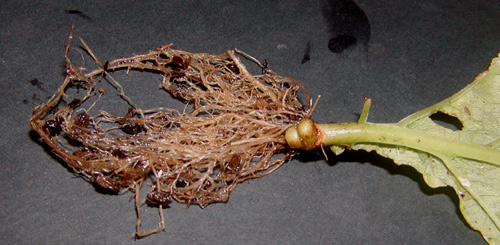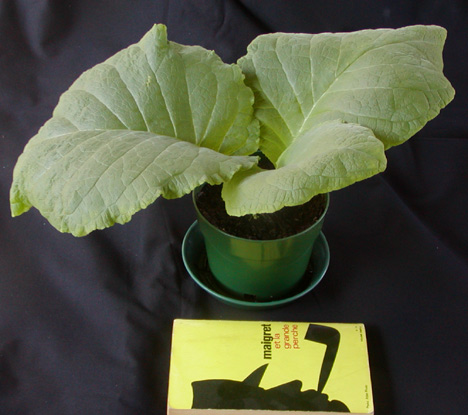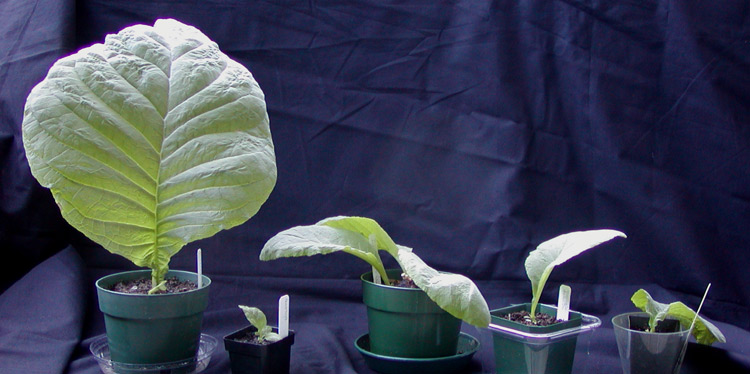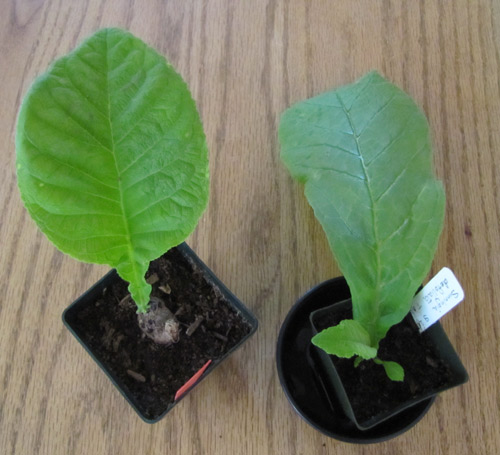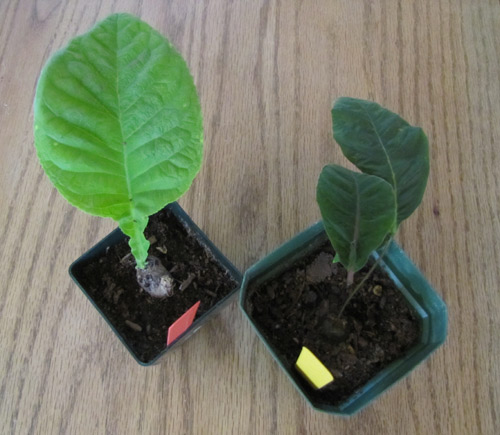Sinningia defoliata propagation
- Sinningia defoliata leaf cutting
- Sinningia defoliata stem cutting
- Family portrait
- 2010 Update
- Practical propagation
- The Moral of the Stories
In June 2008, I visited Fred Stryker, a friend and fellow gesneriad grower, and took along my Sinningia defoliata, with one very large leaf, to show him. On the way home, the plant rode in the hatchback area. I had neglected to notice that since I was travelling north, the plant would be exposed to full sun through the rear window.
When I got home, after less than an hour's drive, this is what I saw.
Obviously, this leaf was a goner. I cut it off and hoped the plant would make a new leaf.


